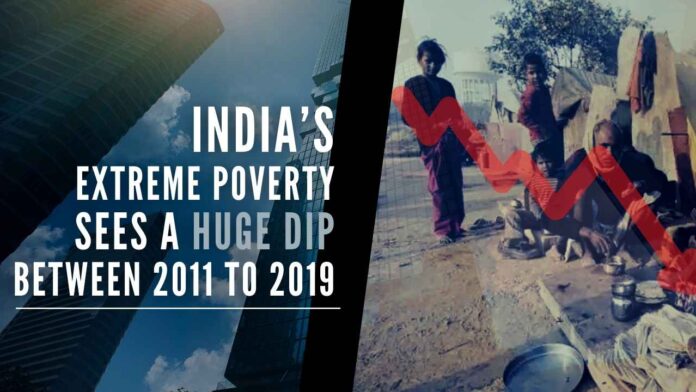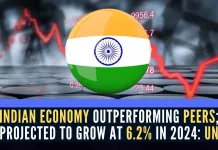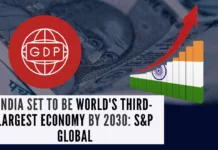
India witnesses a sharp decline in poverty by 12.3 percentage points in 2019 than 2011
According to the World Bank Policy Research Working Paper, India’s extreme poverty is estimated to have declined 12.3 percentage points in 2019 than 2011. The extreme poverty count fell from 22.5% in 2011 to 10.2% in 2019 and the decline in rural areas was much higher than in urban areas, estimates the study. There is a comparatively sharp decline in sectors, which is a working paper, World Bank Policy Research said.
The paper is jointly authored by economists Sutirtha Sinha Roy and Roy van der Weide. The World Bank policy research working papers aim to encourage the exchange of ideas on development and quickly disseminate the findings of research in progress.
The findings came close on the heels of a working paper published by the International Monetary Fund (IMF) saying India has virtually eliminated extreme poverty through state-provided food items and brought consumption inequality to its lowest level in 40 years. The report noted that poverty reduction was higher in rural areas than in urban India as rural poverty declined from 26.3% in 2011 to 11.6% in 2019, while the decline in urban areas declined from 14.2% to 6.3% during the same period.
“Rural and urban poverty declined by 14.7 and 7.9 percentage points during 2011-2019,” said the World Bank’s working paper. Poverty in India has seen a decline in the last decade but not as much as previously thought. The purpose of the World Bank Policy Research Papers is to encourage the exchange of ideas on development and to quickly disseminate the findings of research in progress.
According to the study, farmers with smaller holdings have experienced higher income growth. Between the two rounds of the survey, the real income of farmers with the smallest holdings increased by 10 percent annually. [2013 and 2019] compared to an increase of 2 percent for the farmers with the largest holdings,” it said.
“This paper sheds light on how poverty and inequality have evolved since 2011 using a new household panel survey, the Consumer Pyramids Household Survey conducted by a private data company,” the authors said. In view of the data quality issues, in November 2019, the ministry of statistics and program implementation (MOSPI) decided to hold the release the consumer expenditure survey results for 2017-2018.
According to the World Bank’s research paper, urban poverty in India rose by 2 percentage points in 2016 coinciding with the demonetization, and rural poverty rose by 10 basis points in 2019, coinciding with a slowdown in the economy. “We detect two incidences of rising poverty in our period of analysis: urban poverty rose by 2 percentage points in 2016 during the demonetization event and fell sharply thereafter; and, rural poverty rose by 10 basis points in 2019 likely due to a growth slowdown,” the paper said.
The paper also talked about consumption inequality. “We observe a slight moderation in consumption inequality since 2011, but by a margin smaller than what is reported in the unreleased NSS-2017 survey. Finally, the extent of poverty reduction during 2015-2019 is estimated to be notably lower than earlier projections based on growth in private final consumption expenditure reported in national account statistics,” the authors said.
[With Inputs from IANS]
PGurus is now on Telegram. Click here to join our channel and stay updated with all the latest news and views
For all the latest updates, download PGurus App.
- Myanmar authorities seize 100 Kg methamphetamine, 13 kg of ketamine in southern region - April 28, 2024
- Centre permits export of 99,150 tonnes of onion to 6 countries - April 28, 2024
- Delhi Congress chief resigns, cites party’s alliance with AAP - April 28, 2024










